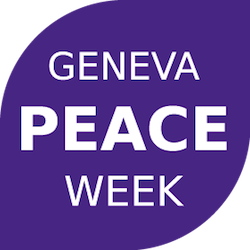GPW 2017: Summary of discussions on conflict prevention and new technologies
23 Nov 2017 01:00h
Event report
Throughout the 2017 edition of the Geneva Peace Week, it became clear that digital technology has important implications for conflict prevention, albeit in two distinct and contradictory ways. Some sessions identified the ways in which digital technology can assist in the prevention of conflict. They highlighted the potential of e-commerce, big data, artificial intelligence (AI), and geographic information systems. Yet, at the other end of the spectrum, there was a focus on the ways in which digital technologies have given rise to increased threats. How to respond to the risk to cyberconflict? What will happen if new technologies, such as big data and AI, are used for the wrong purposes?
Opportunities for conflict prevention
One of the opportunities posed by digital technology is in the realm of e-commerce. With the launch of the e-caravan for peace, the International Trade Centre and the Permanent Mission of Japan showed that e-commerce can advance economic empowerment, including that of women and migrants in conflict situations. Trade in war zones can be a force for good, and e-commerce can allow for the integration of disempowered communities in the economy.
Gaming is another emerging avenue of contribution to conflict prevention. UNITAR presented its recently developed peacekeeping game Mission Zhobia. Throughout the game, skills and knowledge can be developed and tested in the safe environment of a simulated game. By training on issues such as conflict analysis, engaging stakeholders, building trust and adapting to new challenges, the game teaches key competencies for peacebuilding.
Emerging technologies may have extensive potential in untangling the complexity in which conflicts are embedded. Big data could provide real-time, objective information to conflict analyses and early warning systems, and the visualisation of big data could provide clarity on conflict patterns. Geographic information systems and satellite data – which could be considered one of the earliest forms of big data – can provide important insights in early warning systems and the utility of open source-based information was also discussed. Yet big data can be complex, biased and multi-interpretable, and their collection can give rise to data protection concerns that need to be taken into account. AI systems have turned out to be effective in tackling well-defined problems; nonetheless, their utility in complex settings and social contexts has so far remained limited.
Threats to conflict
One of the recurring themes during the Geneva Peace Week was the search for an appropriate response to the risk of cyberconflict. One initiative was brought forward earlier this year by Microsoft’s President Brad Smith, who proposed a Digital Geneva Convention. The utility of such a convention was discussed during one of the roundtables at the opening of the Geneva Peace Week. Discussants agreed that challenges brought by digitalisation require new norms and regulations. However, due to the important role of non-state actors in cyber warfare and the key concerns regarding the responsibility of the private sector, a Digital Geneva Convention might not be able to solve the key issues.
Further building on this topic, the session on Preventing cyber conflicts: Do we need a cyber treaty?, discussed, among other things, whether the existing legal framework is sufficiently equipped to deal with cyber threats. The panellists agreed that any new convention needs to be drafted with the participation of all the stakeholders and that governments need to take action to address vulnerabilities and externalities. Another session tackled a particular cyber challenge – the creation of a safer Internet for children, dealing with the development of a strategy to combat sexual violence against children.
The topic was concluded with a keynote lecture by Smith, who explained the rationale behind the proposed Digital Geneva Convention, relating it to the history of the establishment of the ICRC and the Geneva Conventions. His keynote was followed by a panel discussion with humanitarian and human rights perspectives and comments from the participants and online audience.
Besides the Internet as we know it today, emerging technologies are giving rise to new threats as well. Big data risks leading to mass surveillance and AI could empower lethal autonomous weapons systems. The face of war and conflict prevention will continue to be affected by technology, highlighting the need to continue the discussion on how to mitigate technology threats while promoting technology as a conflict prevention tool.
Related topics
Related event

